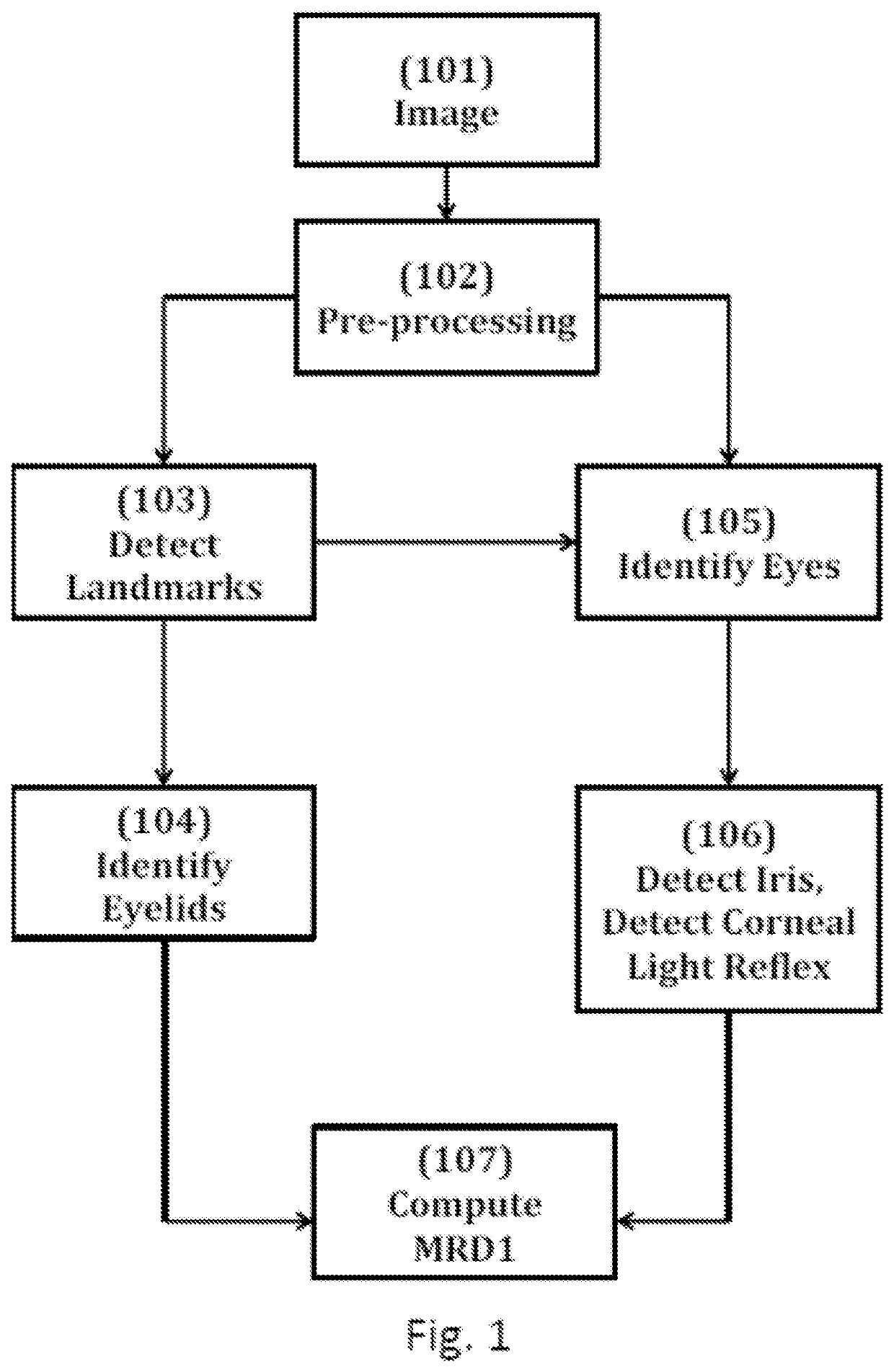Techniques for identifying blepharoptosis from an image
- Summary
- Abstract
- Description
- Claims
- Application Information
AI Technical Summary
Benefits of technology
Problems solved by technology
Method used
Image
Examples
Embodiment Construction
1. Summary
[0017]A method for measuring blepharoptosis using an image of the face is disclosed. The method is performed under control of a hardware computer processor. The image of the face is to be captured by an image capture device with good resolution. Locations of facial landmarks (points on eyelids and canthi) are predicted using an Ensemble of Regression Trees. Regression is used to detect eyelid shape curve (e.g., quadratic, ellipsoidal or polynomial). The location of the face and eye are predicted using HOG, a linear classifier, an image pyramid and a sliding window detection scheme. Gaussian blurring is applied to remove noise. Sliding window algorithms are employed to find the iris and the corneal light reflex.
[0018]The method consists of the use of HOG (Histogram of Oriented Gradients) and linear classifiers to detect the face in the given image along with HOG and linear Classifiers to predict the location of facial landmarks in the face. With the help of these landmarks,...
PUM
 Login to View More
Login to View More Abstract
Description
Claims
Application Information
 Login to View More
Login to View More - R&D
- Intellectual Property
- Life Sciences
- Materials
- Tech Scout
- Unparalleled Data Quality
- Higher Quality Content
- 60% Fewer Hallucinations
Browse by: Latest US Patents, China's latest patents, Technical Efficacy Thesaurus, Application Domain, Technology Topic, Popular Technical Reports.
© 2025 PatSnap. All rights reserved.Legal|Privacy policy|Modern Slavery Act Transparency Statement|Sitemap|About US| Contact US: help@patsnap.com



